On the Road is a weekday feature spotlighting reader photo submissions.
From the exotic to the familiar, whether you’re traveling or in your own backyard, we would love to see the world through your eyes.
Ex-lurker
Adding to my post showing photos I’ve taken of raptors and their nests over the last few years, here are a few more.
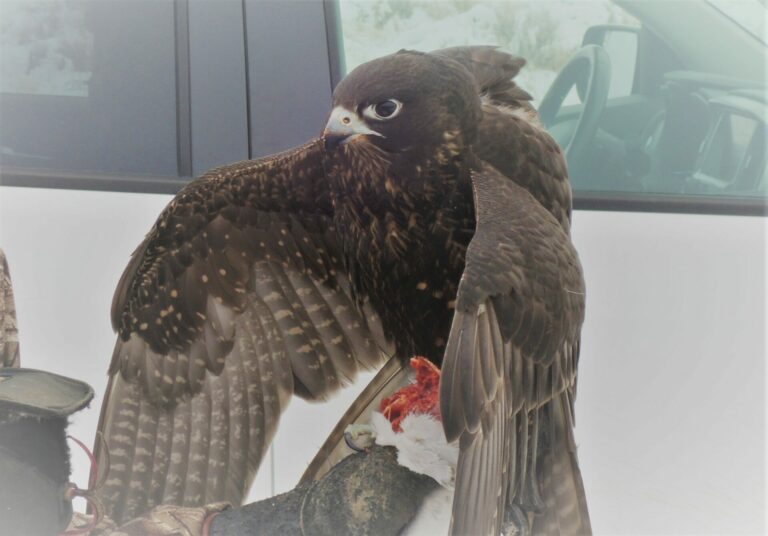
This is a tiercel gyr/peregrine hybrid. He’s mantling (using his wings to hide his food). Almost all birds do it, but it’s considered a little bit impolite, although there’s not much of a way to break a bird of it.
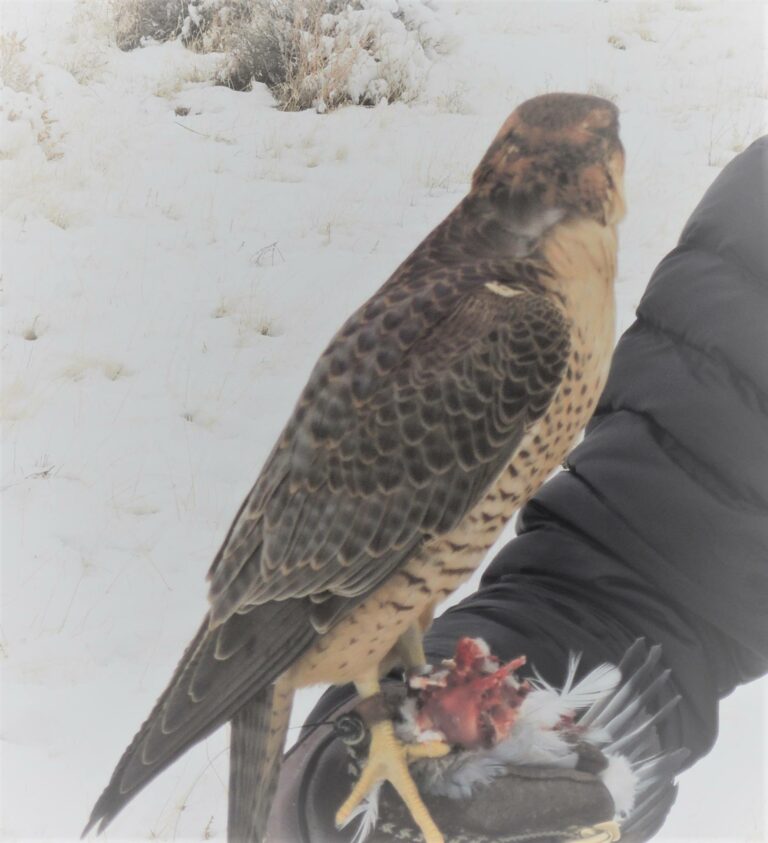
This is a tiercel red-naped shaheen (Falco pelegrinoides). You can see in this shot why they’re called red-naped. Tom Cade’s book, The Falcons of the World, classifies Barbary falcons, black-naped shaheens and red-naped shaheens as three subspecies, but I’m sure there’s been DNA investigations since that can tell us whether they are true species or not.
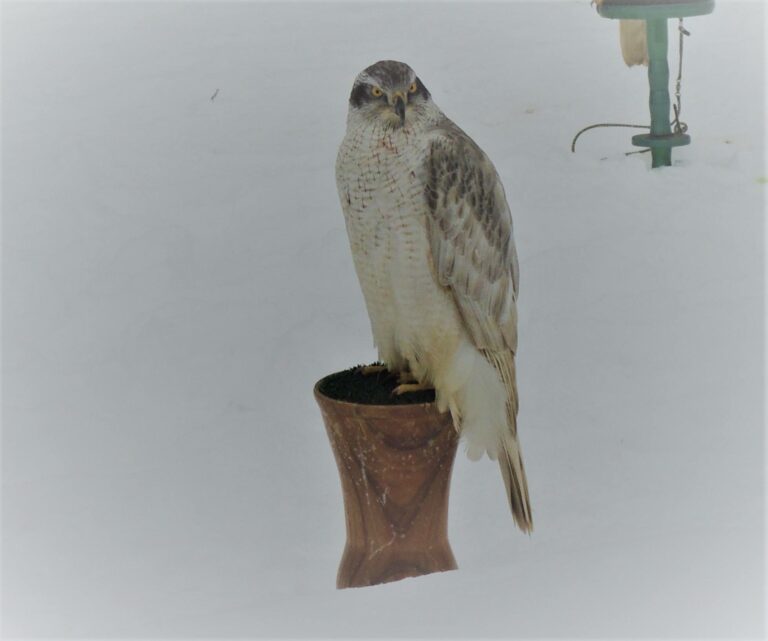
This is a Siberian goshawk (i.e., the Siberian subspecies of the Northern Goshawk). I’m not real familiar with the plumage in this subspecies, but I think from the lack of streaking on the breast that this bird has molted once (probably not more than once, or its eyes would be turning darker). Siberian goshawks have softer feathers than other subspecies. Goshawks are very silent flyers, and Siberians are even quieter.
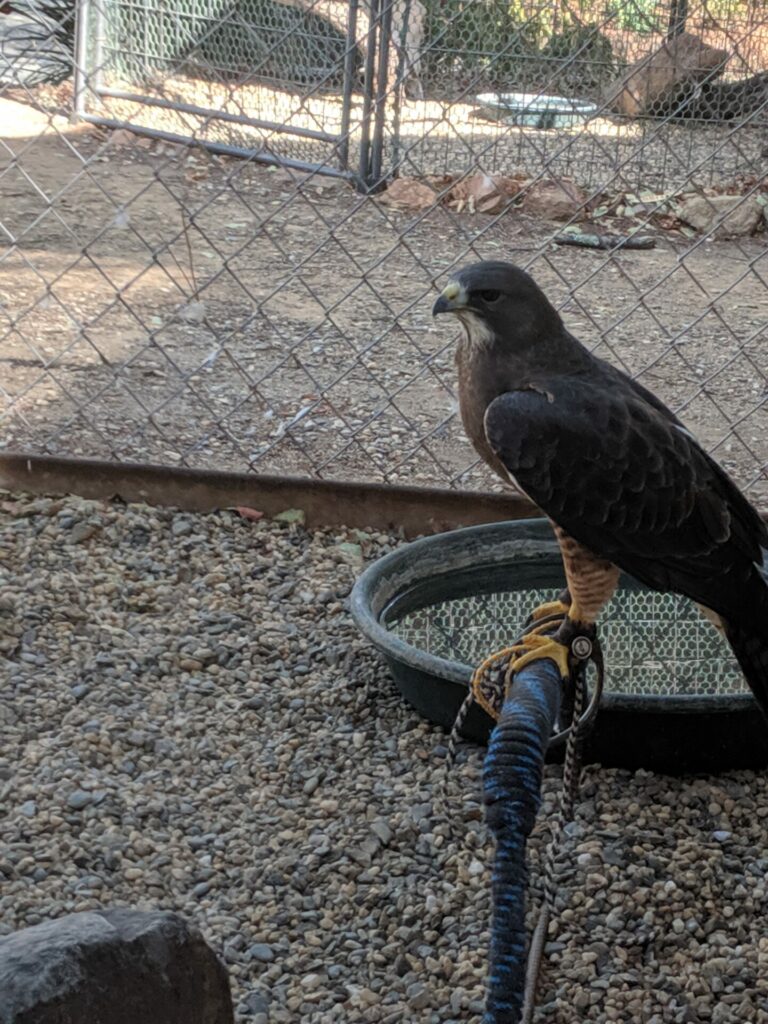
This is a female Swainson’s hawk. This is a rehab bird–they’re not used in falconry, as their feet are too small for game larger than gophers.
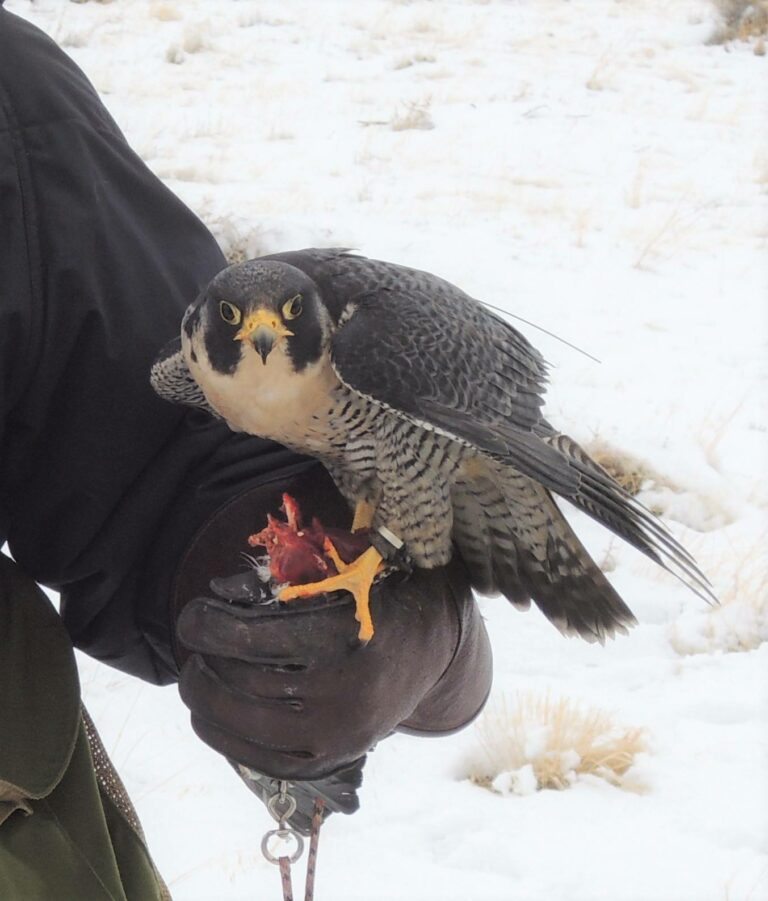
This is a intermewed eyass tiercel peregrine. You can just make out the salmon colored “wash” on the breast, which tells you that this is an anatum bird (F.p. anatum), the subspecies found in most of North America (the other two are pealei, found on the coast of northwestern North America out through the Aleutians, and tundrius, found, as its name implies, in the tundra, wintering in Central and South America)
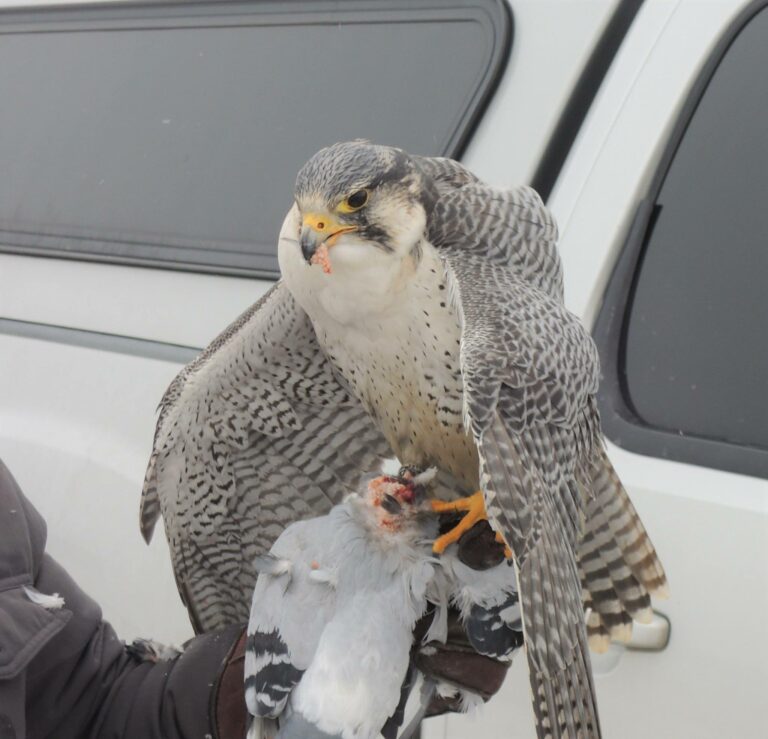
This is a tiercel gyr/peregrine hybrid.
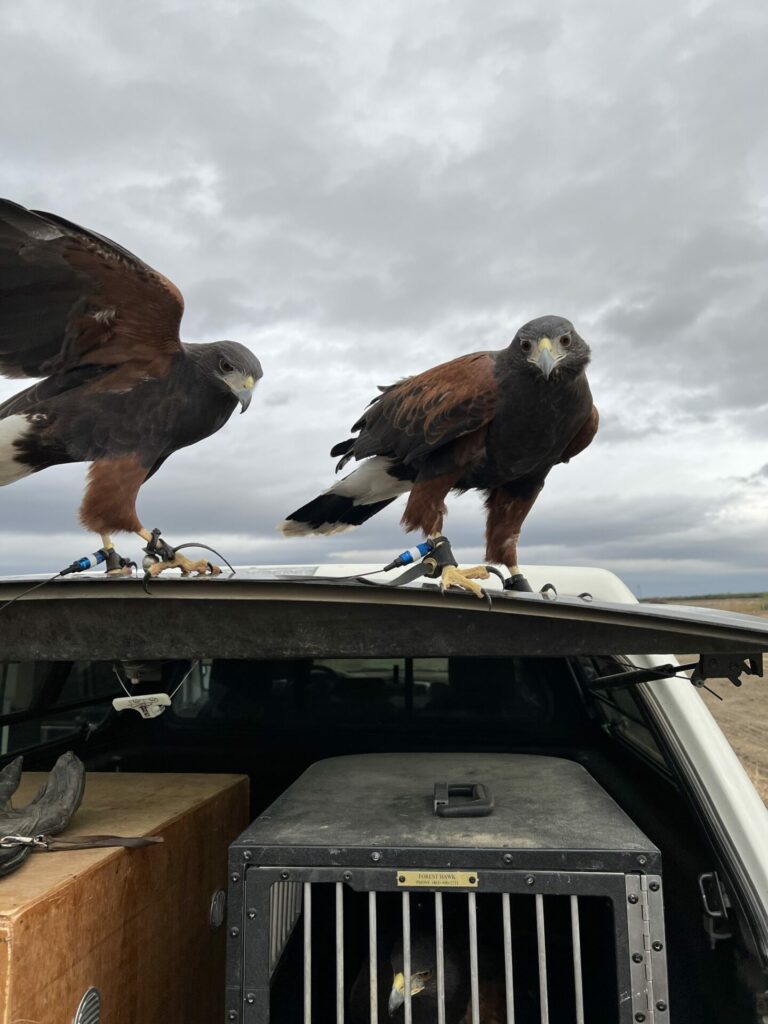
These are tiercel Harris hawks (there’s a female in the “giant hood” in the truck bed–they’re called giant hoods because you can close the windows and the bird is kept calm in the dark). Harris hawks are often flown in casts (i.e., multiple birds) as, unlike most raptors, often hunt in family groups and therefore learn to cooperate with each other quickly.
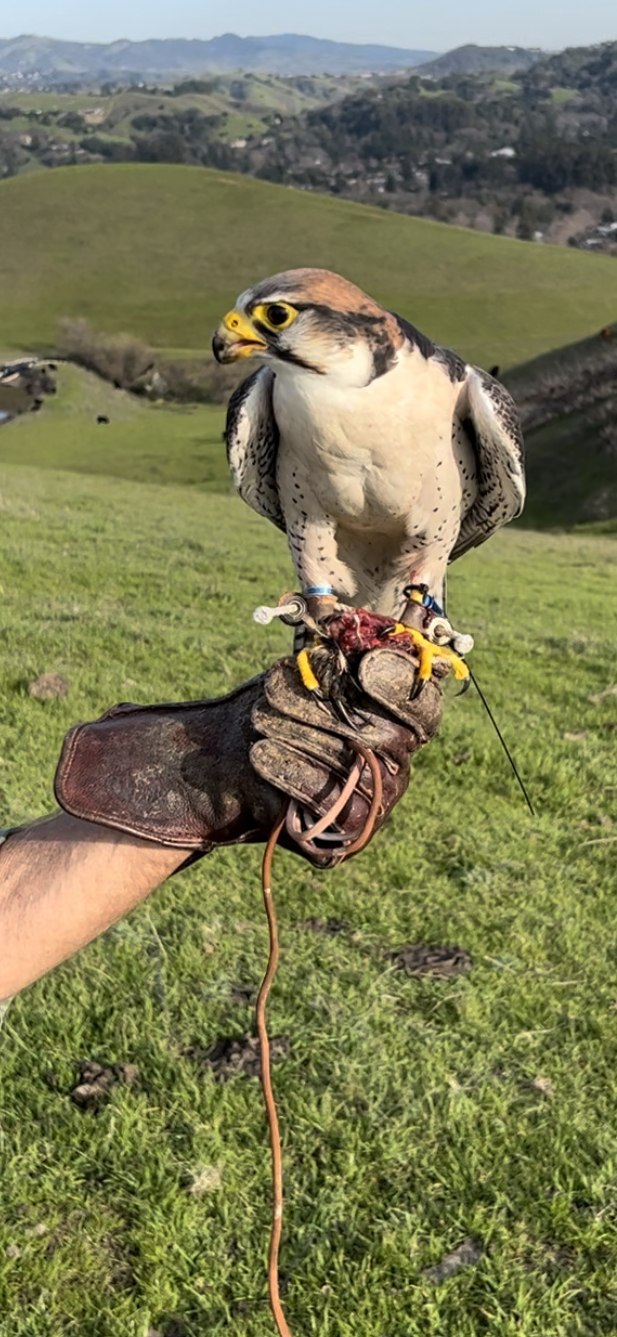
This is an intermewed eyass tiercel lanner (Falco biarmicus), found in the Middle East, northern Africa and parts of Europe and Asia. I think these birds are gorgeous.
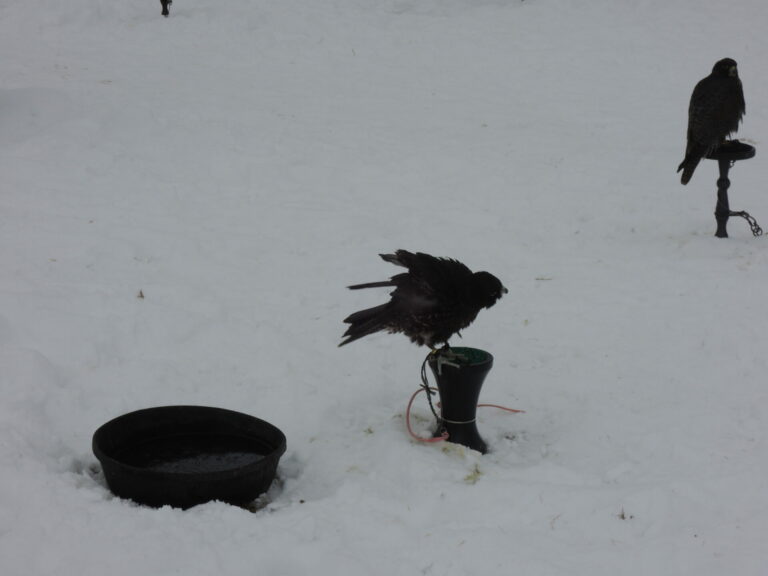
This is a tiercel Harris hawk. You can’t see much of him, but I post this picture because it shows a bird “rousing” (rhymes with “grousing”). It’s one of the signs you look for to tell if your bird’s in “yarak,” the state where it feels healthy and eager to hunt

Steeplejack
Imposing birds.
(Odd: this post is timestamped at 5:00, but it did not appear until a few minutes ago—about 5:35.)
JeanneT
It must be amazing to gain the confidence and trust of these birds. Not a responsibility one can take up casually!
Mathguy
This series is terrific. Thanks for sharing these photos.
citizen dave
Very nice! Thanks for taking the time to find, sort and share these. Sometimes in the last few years I’ve found myself doing a form of mantling–I’ll be hunching over my meal as I start to eat. It’s either a long latent caveman thing, or from watching our cats guard their food–seems to be more of a kitten thing.
oatler
My falconry knowledge is limited to a couple chapters of TH White. Don’t eat the bones.
Doc H
Jumping in again to supplement! Wart, a jack* I flew a few years ago. Extra credit for twigging to where I got the name. And an African Crowned Eagle a friend was flying – getting her ready to go back into a breeding project. Eagles seem to benefit from hunting time before they start raising families.
*male merlin
WaterGirl
@Steeplejack: That just means that it was scheduled for 5 am, and I am 99.9% confident that Anne Laurie noticed at 5:35 that the post had missed its scheduled time, and that’s when she hit PUBLISH.
Miss Bianca
So cool. Thank you for sharing this with us.
Yutsano
RAPTOR BIRBS!!It was a science that almost made me change my major when I was at Boise State University. If I had actually stayed (I didn’t get financial aid there and my parents ran out of money) it probably would have happened. They’re just amazing to watch both in flight and on the ground.
Kristine
Such gorgeous birds. Thanks for the pics and all the terminology I didn’t know that I didn’t know.
bluefoot
@Doc H:
That eagle is big! how heavy are they?
I assume you got the name Wart from The Once and Future King.
Doc H
@bluefoot: *ding ding ding* you’re correct on Wart’s name. I’m not sure exactly how heavy – heavy enough that I /noticed/ her weight. Mostly I was worried about my thumbnail. When I first picked her up she was hooded, obv, and she knew that I wasn’t her person. She gripped the gauntlet a little tightly, with one talon right on my nail. I was sure it was going to be purple when I dofffed the glove (it wasn’t). Once I struck the hood and she checked me out, she relaxed.
ArchTeryx
Having grown up with a falconer father this was an absolute joy to see, including some more exotic birds of prey!
Yarak is a funny thing. It’s base meaning is “keen to hunt” but it’s a much more complex set of changes in the bird’s physiology that prepares it physically and mentally to hunt. And it can be very dangerous with accipiters. Few falconers will fly Goshawks because a Goshawk in yarak can go into adrenaline shock and die right on your glove if not flown immediately. Most birds of prey aren’t that sensitive. The gyrfalcon may be the bird of kings, but the goshawk is the bird of masters.
Wanderer
Beautiful photos. These birds are so impressive. Thanks for sharing info about the birds and the language.
Ex-lurker
Now that I know a “real” falconer is reading I’ll have to be careful–as I said, compared to people who have been doing it for many years, especially recently, my knowledge is pretty thin. So Doc H, if I say something stupid, please jump in–I have no vanity about my knowledge (BTW Wart is pretty big for a jack, isn’t he? And is Clovis a brookei, or am I completely off base?)
If I recall correctly, Helen MacDonald’s “H is for Hawk” says that “yarak” comes from a Turkic word meaning erect penis–so that tells you what you’re looking for when you try to determine if the bird is ready. ArchTeryx, I didn’t know that about goshawks–I never flew an accipter.
Now that I look more closely at the Siberian goshawk, I think it’s a first year bird–the brown you can just make out on the back tells you it’s young. Doc H, would you agree?
Doc H
@Ex-lurker: I’d have to go back and look at my log book, but as I recall Wart was right in the middle of the weight range for jacks. Clovis is an anatum – bred in the PNW, but still likely to have mixed up genetics ;) . She’s still settling in to adult coloration – this moult should see her steel grey, though I have no idea where her breast feathers will end up.
I think your first ID of the Siberian gos was correct. I’ve only seen 1 first year bird fly, and Siberians are almost as variable as gyrs, but to the best of my knowledge they don’t get horizontal barring until the first moult – before that, it’s vertical streaks (and much browner). But, of course, I could be wrong!
Ex-lurker
@Doc H: Well, at least I got Clovis’s species correct. I was afraid you were going to say “can’t you recognize a saker (or some other species) when you see it?”
Doc H
@Ex-lurker:
*huge grin